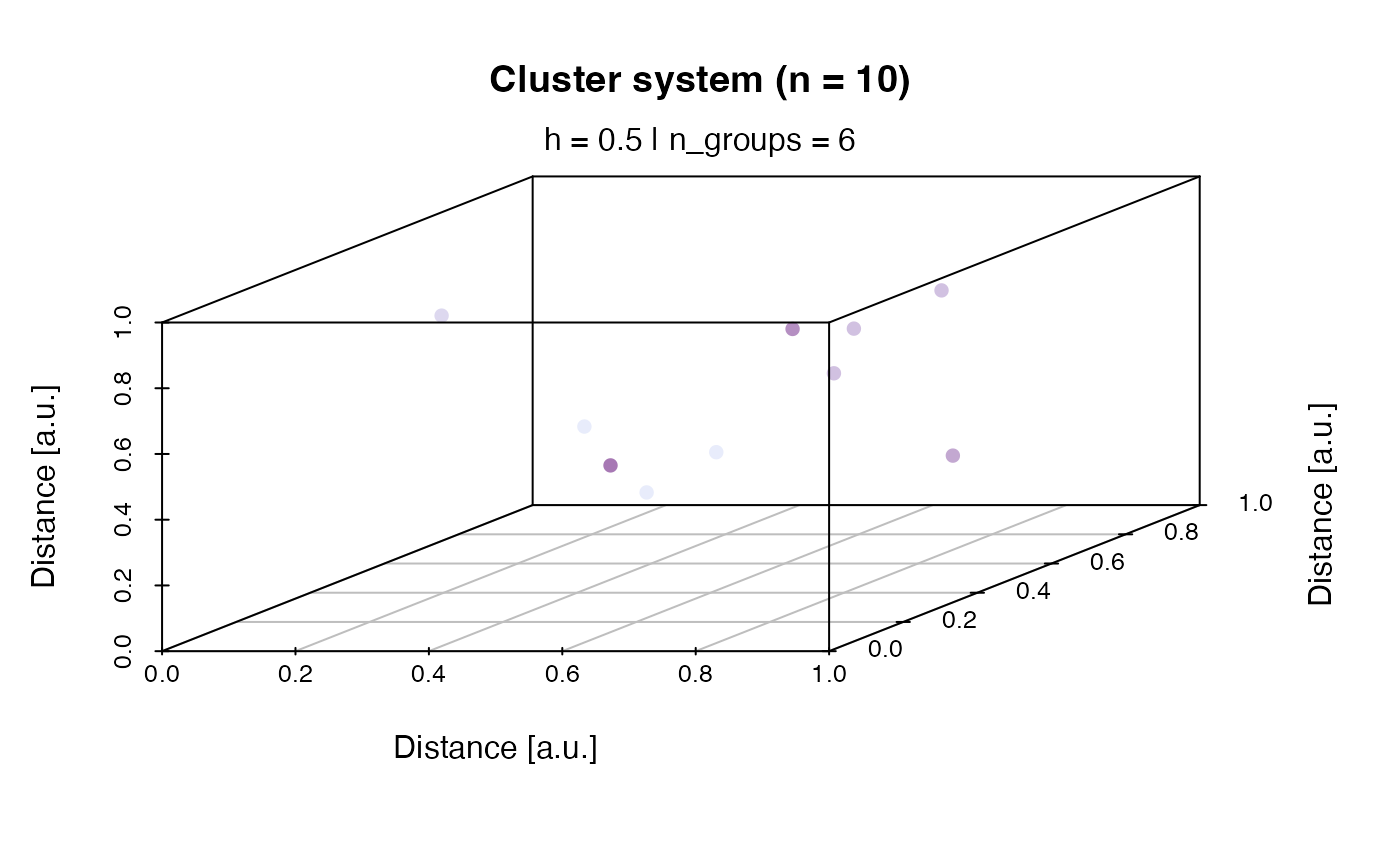In order to allow interaction of an spatial a correlation clusters in RLumCarlo, first a dosimetric system needs to be created in a three-dimensional space, which is the purpose of this function.
Arguments
- n
numeric (with default): number of clusters to be created in an arbitrary 3-dimensional cube. x, y, z distances range between 0 and 1.
- h
numeric (with default): numeric scalar the cut the cluster tree using stats::cutree. The number must range between 0 and 1.
- plot
logical (with default): enables/disables plot output
- ...
further arguments to be passed to the plot output
Value
The function returns a list of class RLumCarlo_clusters consisting
of numeric vector of cluster groups and a matrix of the cluster positions
in the arbitrary space. If plot = TRUE the system is displayed using
scatterplot3d::scatterplot3d
How to cite
Kreutzer, S., 2025. create_ClusterSystem(): Create dosimetric cluster system. Function version 0.1.0. In: Friedrich, J., Kreutzer, S., Pagonis, V., Schmidt, C., 2025. RLumCarlo: Monte-Carlo Methods for Simulating Luminescence Phenomena. R package version 0.1.10. https://r-lum.github.io/RLumCarlo/
Examples
create_ClusterSystem(n = 10, plot = TRUE)
 #> $cl_groups
#> [1] 1 2 3 1 4 1 5 6 4 2
#>
#> $m
#> x y z
#> [1,] 0.600760886 0.03424133 0.73531960
#> [2,] 0.157208442 0.32038573 0.19595673
#> [3,] 0.007399441 0.40232824 0.98053967
#> [4,] 0.466393497 0.19566983 0.74152153
#> [5,] 0.497777389 0.40353812 0.05144628
#> [6,] 0.289767245 0.06366146 0.53021246
#> [7,] 0.732881987 0.38870131 0.69582388
#> [8,] 0.772521511 0.97554784 0.68855600
#> [9,] 0.874600661 0.28989230 0.03123033
#> [10,] 0.174940627 0.67838043 0.22556253
#>
#> attr(,"class")
#> [1] "RLumCarlo_ClusterSystem"
#> $cl_groups
#> [1] 1 2 3 1 4 1 5 6 4 2
#>
#> $m
#> x y z
#> [1,] 0.600760886 0.03424133 0.73531960
#> [2,] 0.157208442 0.32038573 0.19595673
#> [3,] 0.007399441 0.40232824 0.98053967
#> [4,] 0.466393497 0.19566983 0.74152153
#> [5,] 0.497777389 0.40353812 0.05144628
#> [6,] 0.289767245 0.06366146 0.53021246
#> [7,] 0.732881987 0.38870131 0.69582388
#> [8,] 0.772521511 0.97554784 0.68855600
#> [9,] 0.874600661 0.28989230 0.03123033
#> [10,] 0.174940627 0.67838043 0.22556253
#>
#> attr(,"class")
#> [1] "RLumCarlo_ClusterSystem"